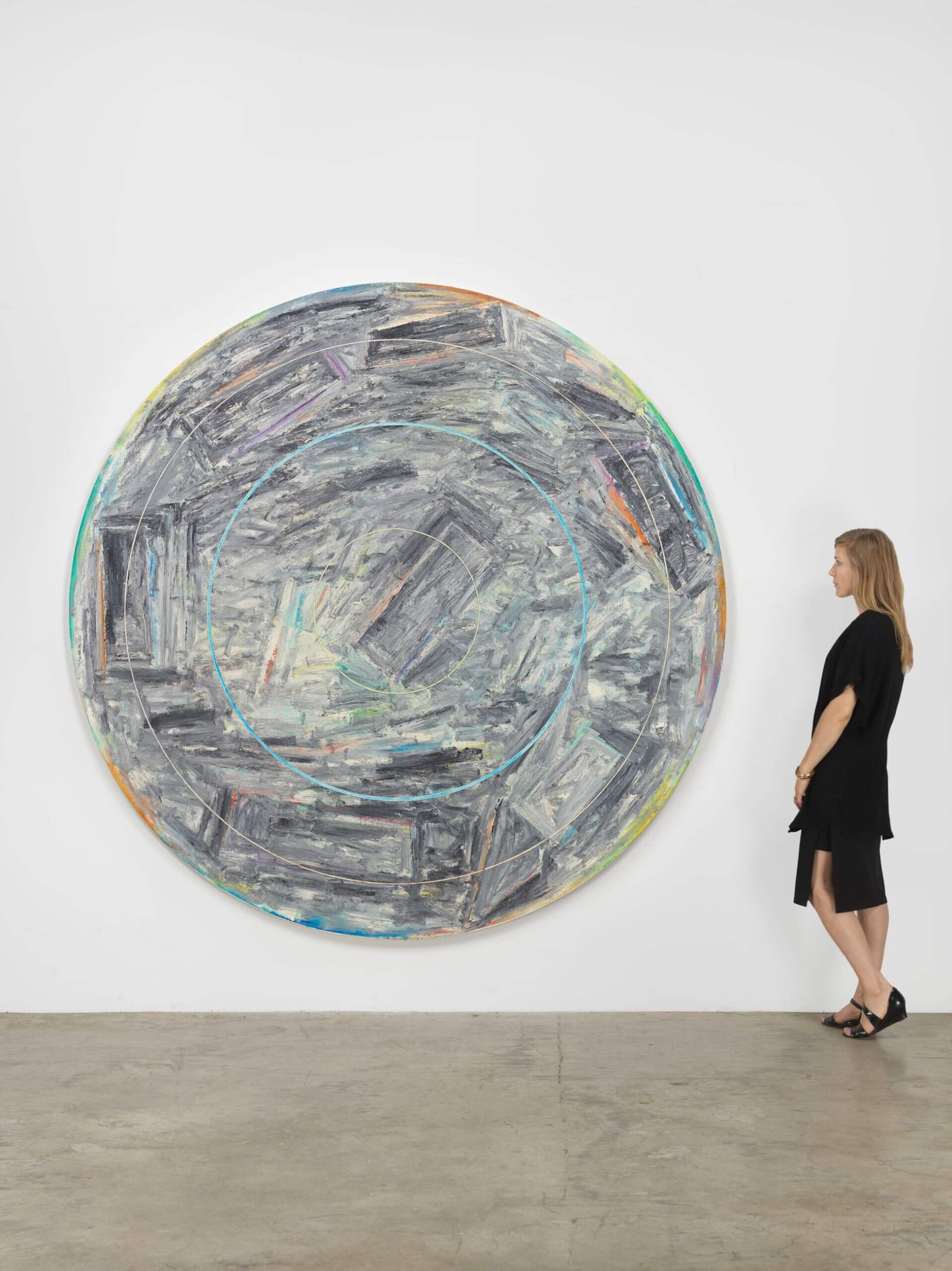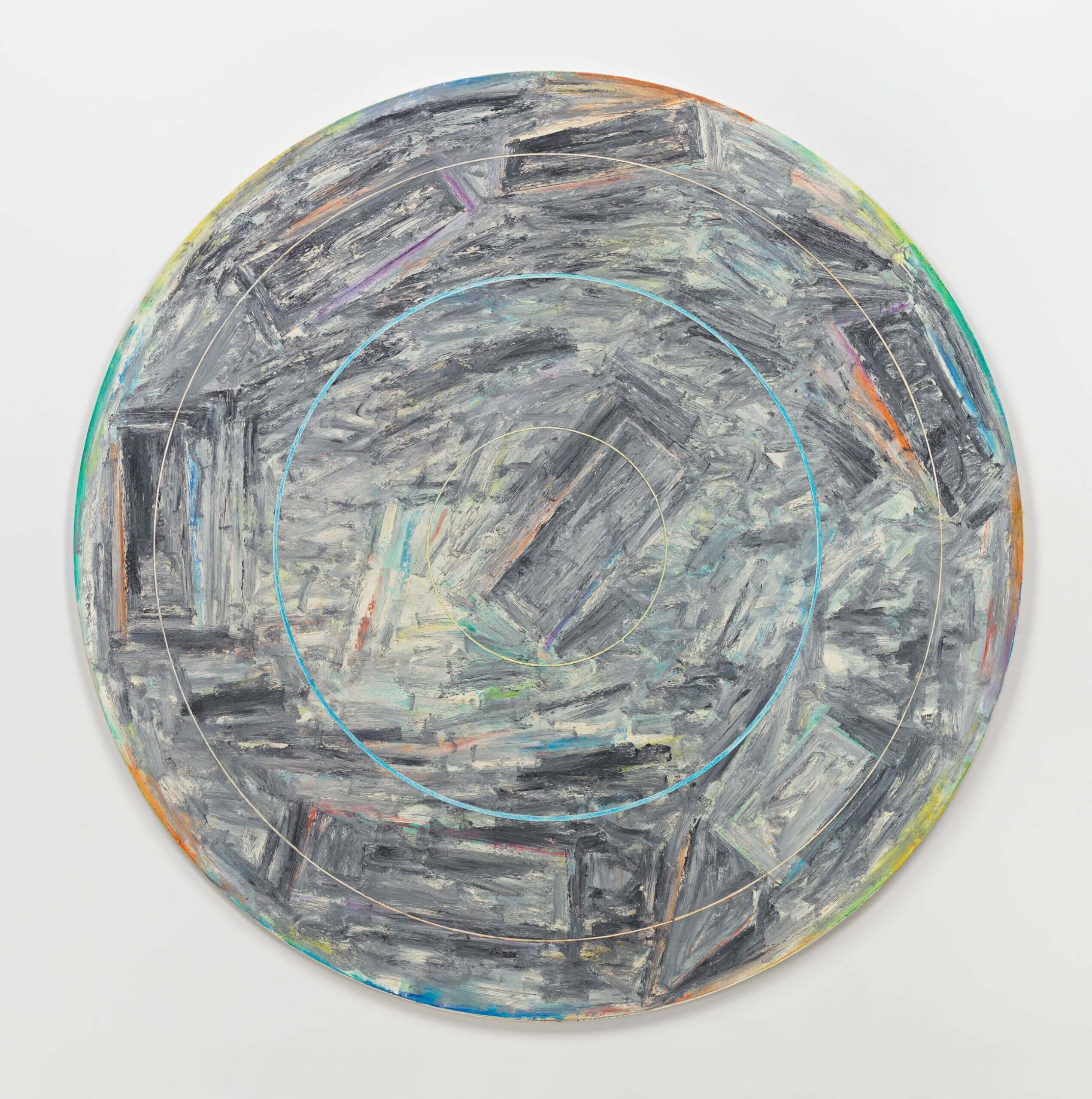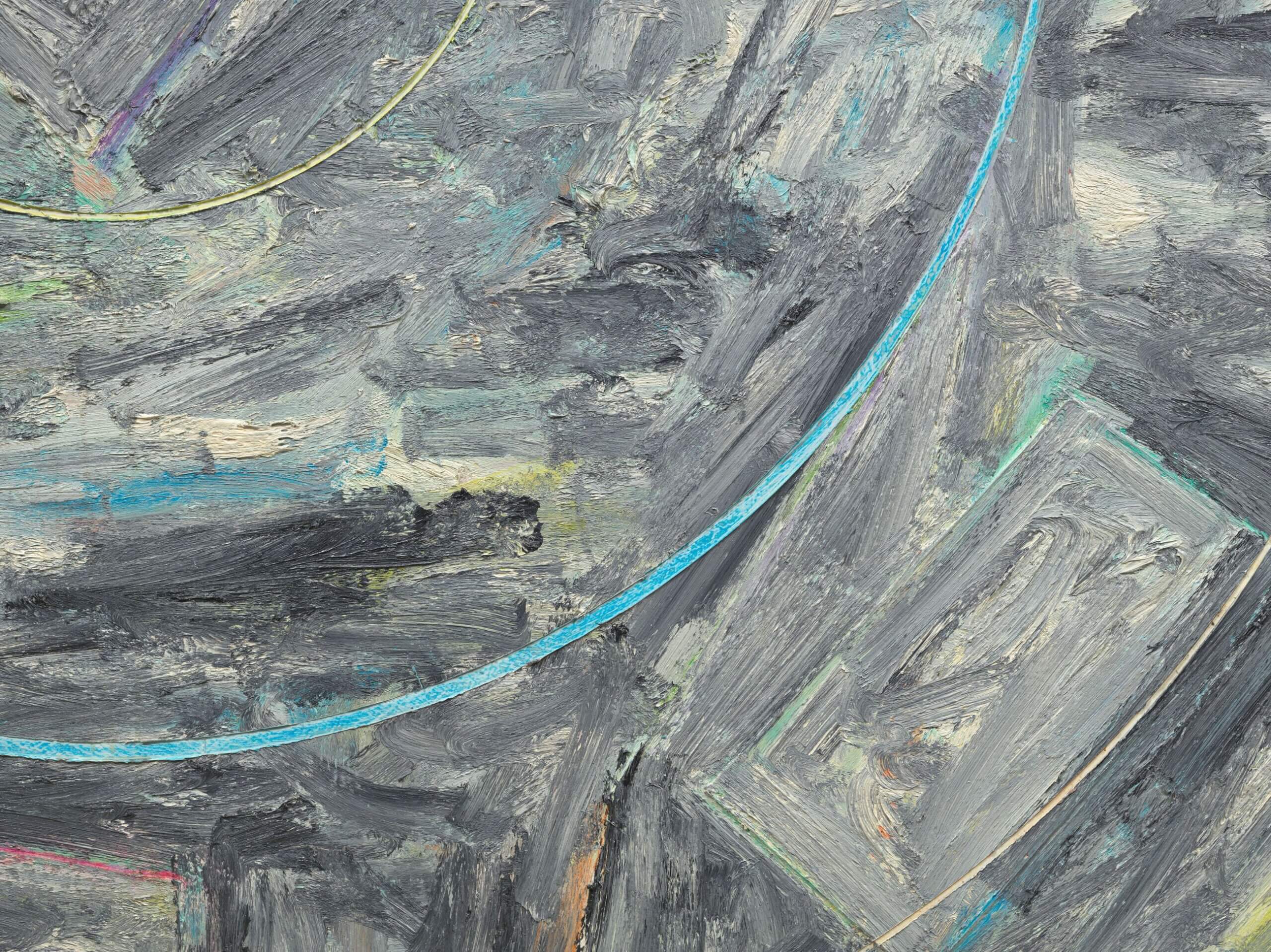
Jack Whitten
The Kid From Red Bank: The Count
The Kid From Red Bank: The Count
1985 Acrylic and oil on canvas Unique 227.3 x 227.3 cm / 89 1/2 x 89 1/2 in
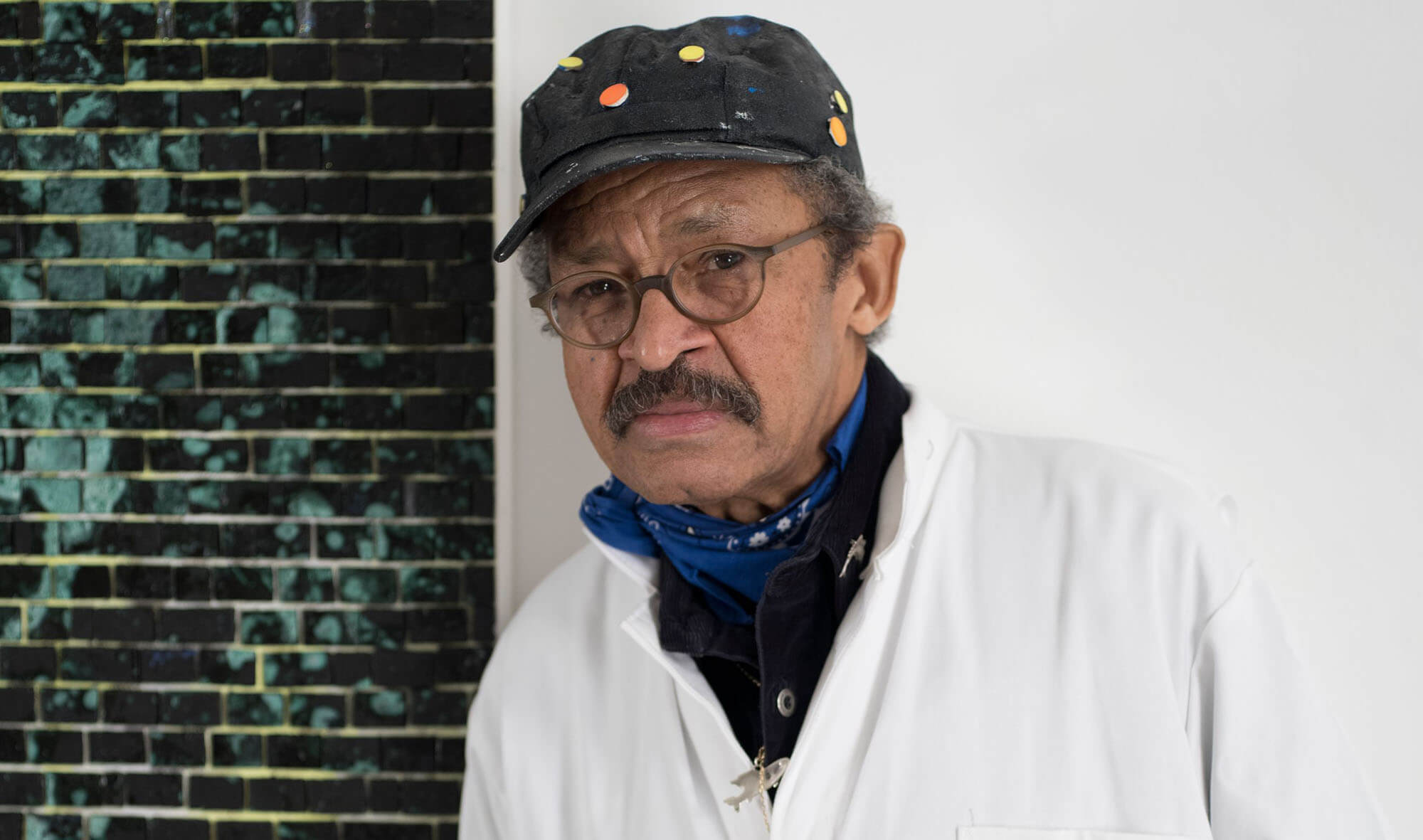
Jack Whitten
Born in Bessemer, Alabama in 1939, Jack Whitten is celebrated for his innovative processes of applying paint to the surface of his canvases and transfiguring their material terrains. Although Whitten initially aligned with the New York circle of abstract expressionists active in the 1960s, his work gradually distanced from the movement’s aesthetic philosophy and formal concerns, focusing more intensely on the experimental aspects of process and technique that came to define his practice.
The Kid From Red Bank: The Count
Striking in scale and mesmerising in texture, ‘The Kid From Red Bank: The Count’ is an outstanding example of Whitten’s series of circular acrylic and oil reliefs. Created after a three-year hiatus in his practice, following a devastating studio fire in 1980, this series marks a prolific new phase in Whitten’s oeuvre. To create these works, Whitten began using small, self-designed tools to incise arcs, lines and circles into quarter-inch thick acrylic planes. At this time, Whitten started using a paintbrush again too, embracing the gesture of the hand that he had abandoned in the 1970s.
In ‘The Kid From Red Bank: The Count’, three concentric circles of different linear weight and colour are incised into a heavy impasto of acrylic paint, while trapezoidal forms line the curvature of the circles. Lively brushstrokes emerge from the surface, creating a dynamic sense of activity and movement. To create this effect, Whitten built up layers of acrylic paint onto the canvas, which he would then cut into, exposing an accumulation of colour underneath swathes of grey or black. By doing so, Whitten created an illusion of light seeping through the surface. The energetic composition is further framed by a luminous border of tangerine oranges, lemon yellows and verdant greens.
Through its highly geometric and optical composition, ‘The Kid From Red Bank: The Count’ calls to mind the physical and physiological mechanisms of visual perception. Whitten was highly influenced by the development of photography in the 1960s and in 1964 he concluded, ‘The image is photographic. Therefore, I must photograph my thoughts’. [1] This declaration became a prominent, driving force behind Whitten’s experimentation with the materiality of paint. As Richard Schiff notes, ‘the study of perception, not its mere reflection in illustrative imagery, became Whitten’s self-assignment as a visual artist.’ [2] Whitten closely studied and developed a deep understanding of the physics of photography; he was particularly fascinated by the speed at which a camera could capture a vast density of information, surmising that, ‘A camera is dark, a certain amount of light enters, and the amount of light is what TRAPS the image. Whatever happens on the plane of my painting has to take place instantly and has to catch and freeze something.’ [3] For Whitten, the fast-drying nature of acrylic paint allowed him to realise his vision; he achieved a dynamic sense of fluidity, clarity and speed in his painting, which is deeply evident in ‘The Kid From Red Bank: The Count’.
For Whitten, subject matter was as important to his paintings as was his process. Whitten’s work is deeply rooted in his personal history, and as a result, his paintings are often dedicated to those who have influenced and inspired his practice. In ‘The Kid From Red Bank: The Count’, Whitten pays tribute to William James ‘Count’ Basie, who was a prolific American jazz musician. Jazz had a profound impact on Whitten’s work. Originally an aspiring tenor saxophone player, Whitten was active in the 1960s New York music scene, and his friendships with musicians had a lasting effect on his creative process and approach. Victoria Sung of the Walker Art Center writes: ‘Whitten falls into the art historical narrative following Abstract Expressionist painters Willem de Kooning, Franz Kline, Mark Rothko, and Barnett Newman (whom he met at the Cedar Bar in Greenwich Village), and African American artists Romare Bearden, Jacob Lawrence, and Norman Lewis (whose studios he visited uptown). However, it was the jazz musicians... and the conceptual underpinnings of their sound, or what he calls the “philosophy of jazz,” that had a direct influence on the development of his distinct visual style’. [4]
In turn, ‘The Kid From Red Bank: The Count’ demonstrates Whitten’s historic influence on the development and evolution of painting through his deep attention to process, while at the same time paying tribute to one Jazz music’s most influential contributors. When asked about his own legacy, Whitten stated: ‘I want to go down as one of the boys,’ quoting Count Basie, ‘Nothing big, just one of the boys.’ [5]
[1] Jack Whitten in Kathy Siegel (ed.), ‘Jack Whitten. Notes from the Woodshed’, Zurich/CH: Hauser & Wirth Publishers, 2018, p. 282. [2] Richard Schiff, ‘More Dimensions Than You Know. Jack Whitten. Paintings 1979-1989’, Zurich/CH: Hauser & Wirth Publishes, 2017, p. 10. [3] Jack Whitten in Kathy Siegel (ed.), ‘Jack Whitten. Notes from the Woodshed’, Zurich/CH: Hauser & Wirth Publishers, 2018, p. 75. [4] Jack Whitten, ‘Slinging Paint’, Journal entry, circa 1969, Jack Whitten Estate in correspondence with Michael Plunkett, 2019. 5) Jack Whitten in Ian Foster, ‘Jack Whitten. An Artist’s Life’, New York NY: Art21, 2018.
In the Studio: Jack Whitten
Jack Whitten talks about his life and work in his studio in Queens, New York, on the occasion of his exhibition ‘More Dimensions Than You Know: Jack Whitten, 1979 – 1989’ at Hauser & Wirth London in 2017. Celebrated for his innovative processes of applying and transfiguring paint in works alert to politics, identity, and societal coordinates, Whitten holds a unique place in the narrative of postwar American art.
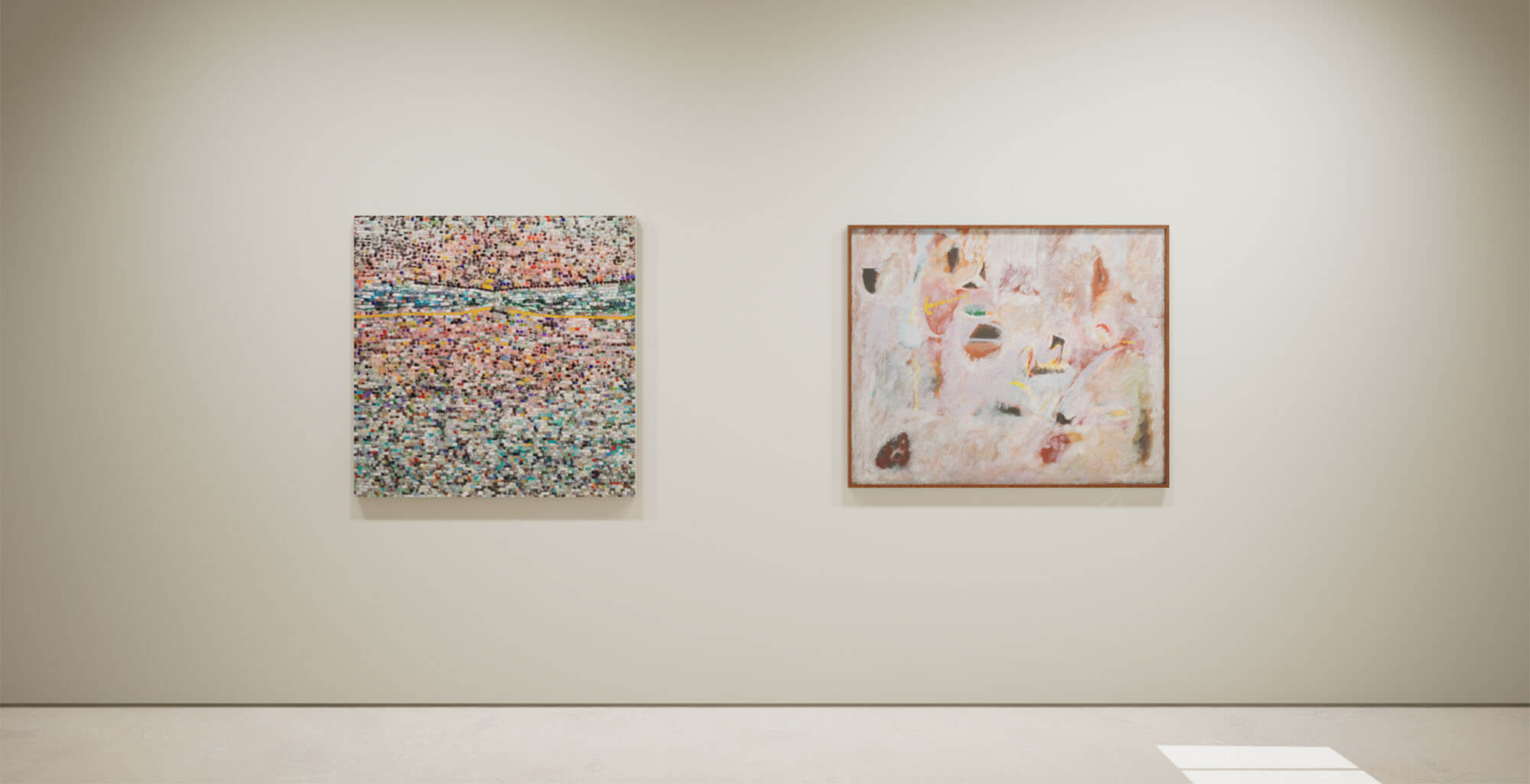
Arshile Gorky & Jack Whitten
Two consummate master artists of the 20th century are shown together in this online exhibition inspired by Whitten himself, who paid tribute to Gorky in a speech he gave in 2017. Whitten described the experience of looking at Gorky’s work as, ‘witnessing something that comes from the deep soul of an artist.’
